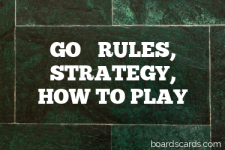Chowka Bhara: Winning Strategies, Rules, and Play Instructions
1. Introduction
Chowka Bhara is a traditional Indian board game that has been played for centuries. It is a game of strategy and chance that involves two to four players. The game is played on a square board divided into smaller squares, with each player having four pawns. The objective of the game is to navigate your pawns around the board and back to your home square before your opponents do. The game requires a set of cowrie shells, which are used as dice, and a Chowka Bhara board, which can be easily drawn on a piece of paper or on the ground.

Chowka Bhara is an age-old Indian board game with its roots steeped in history and tradition. This game has been played across generations for centuries, often serving as a source of entertainment and friendly competition within community gatherings or family events.
At its core, Chowka Bhara is a game of both strategy and chance. The game’s rules and setup are relatively simple, but it is this simplicity combined with its strategic depth that gives it its enduring appeal.
The game is played on a square board which is further divided into smaller squares, usually 16 or 25, depending on the version being played. Each player in the game is given four pawns, which they must navigate around the board. The ultimate objective of the game is to move all of your pawns around the board and back to your initial ‘home’ square before your opponents manage to do the same. This requires a combination of strategic planning and a bit of luck.
In terms of equipment, the game requires a set of cowrie shells that function as the game’s dice. Cowrie shells were traditionally used in many ancient cultures as a form of currency, and they lend a touch of antiquity and cultural significance to the game. The number of shells that land with the opening facing up after being thrown determines how many spaces a player can move their pawns.
The Chowka Bhara board can be easily drawn on a piece of paper or etched onto the ground, making it a highly accessible game that can be played anywhere, anytime. This is a testament to the game’s traditional roots, where it would often be played in informal settings using whatever materials were on hand.
Despite its age, Chowka Bhara continues to be a beloved pastime in many parts of India, and is even gaining recognition and popularity in other parts of the world. Its blend of strategy, competition, and cultural significance make it a timeless game that is likely to be enjoyed for generations to come.
Quick tip to win at Chowka Bhara
Focus on spreading your pieces on the board to increase your chances of capturing your opponent’s pieces while advancing your own.
2. Rules for playing Chowka Bhara
- Each player starts with four pawns in their home square.
- Players take turns to throw the cowrie shells. The number of shells that land with the opening upwards determines the number of squares a player can move their pawn.
- A pawn can only leave the home square if a player throws a one, four, or eight.
- Pawns move in a clockwise direction around the board. If a player throws a two, three, or six, they get an extra turn.
- If a player’s pawn lands on a square occupied by an opponent’s pawn, the opponent’s pawn is returned to their home square.
- The first player to get all their pawns back to their home square wins the game.
These are the official rules of Chowka Bhara, but like many traditional games, variations or ‘house rules’ may be used. For example, some players may choose to play with more or fewer pawns, or alter the rules for moving pawns around the board.
3. How to Win at Chowka Bhara
Winning at Chowka Bhara requires a combination of strategic planning and good luck. Here are some strategies that can help you win the game:
- Try to get your pawns out of the home square as soon as possible. This gives you more options for movement and increases your chances of landing on your opponent’s pawns.
- Use your pawns to block your opponents. If you have a pawn on a square, your opponent cannot pass that square unless they land on it and send your pawn back to the home square.
- Try to keep your pawns spread out around the board. This makes it harder for your opponents to land on them and gives you more options for movement.
- Take advantage of the extra turns you get when you throw a two, three, or six. Use these turns to move your pawns strategically and try to land on your opponent’s pawns.
4. Best Strategies for playing Chowka Bhara game
The best strategies for playing Chowka Bhara involve a combination of offensive and defensive play. On the offensive side, try to get your pawns out of the home square and around the board as quickly as possible. On the defensive side, use your pawns to block your opponents and try to keep your pawns spread out to avoid being landed on. Remember, the game is not only about getting your pawns home first, but also about preventing your opponents from getting their pawns home.
Chowka Bhara, also known as Ashta Chamma, Pagade, and Kattam Vilayattu, is a traditional Indian board game that requires strategic and analytical thinking. Here are some general strategies that can help you win the game:
Understanding the Rules: Before playing any game, it’s crucial to understand the rules thoroughly. This includes the movement of the pawns, the importance of killing an opponent’s pawn, and the role of the throw of the dice or cowry shells.
Plan Your Moves: A good strategy is to plan your moves ahead of time. Try to predict your opponent’s moves and plan yours accordingly. This strategy can help you block your opponent’s moves and increase your chances of winning.
Target Weak Pawns: Always try to target your opponent’s isolated pawns. It’s easier to kill a pawn when it’s not surrounded by other pawns.
Defend Your Pawns: If your pawn is at risk of being killed, move it to a safe position. It’s best to have your pawns in pairs or groups as it’s harder for your opponent to kill them.
Prioritize Killing Over Moving: If you have a choice between killing an opponent’s pawn and moving your pawn closer to the home square, always choose to kill the opponent’s pawn. This reduces the number of pawns your opponent has on the board, which can slow them down.
Use Your Throws Wisely: If you have multiple choices for a throw, consider which option can give you the most advantage. For example, moving a pawn out of the home square might be more beneficial than moving a pawn that’s already on the board.
Maintain A Balanced Approach: Don’t focus solely on offense or defense – a good player knows how to balance both. While it’s important to kill your opponent’s pawns and return them to their home squares, it’s equally important to ensure the safety of your own pawns.
Patience is Key: Chowka Bhara is a game of patience. Rushing to move your pawns to the center might leave them vulnerable to attacks. Wait for the right moment to strike.
Practice: Like any other game, the more you play, the better you become. Practice will help you understand the game dynamics, develop your own strategies, and learn to adapt to different situations.
Remember, the goal is not just to win, but to enjoy the game. So, relax, have fun, and let the game bring out the strategist in you.
5. Scenarios for Chowka Bhara
There are many different scenarios that can arise in a game of Chowka Bhara, and how you handle these scenarios can greatly affect the outcome of the game. Here are some common scenarios and strategies for handling them:
- If you have a pawn on a square and your opponent is about to land on it, you can move that pawn to avoid being sent back to the home square. However, this might leave another of your pawns vulnerable, so you need to weigh up the risks and benefits.
- If you have a pawn close to your home square and you throw a high number, you might be tempted to move that pawn home. However, it might be more beneficial to move a pawn that is further away, as this could give you more options on your next turn.
- If you have multiple pawns on the board and you throw a one, four, or eight, you have the option to move an existing pawn or bring a new pawn out of the home square. Consider the position of your other pawns and your opponents’ pawns before making your decision.
6. Frequently Asked Questions about playing Chowka Bhara game
What happens if all the cowrie shells land with the opening downwards?
This counts as a zero, and the player loses their turn.
Can I pass my own pawn?
Yes, you can pass your own pawn. However, you cannot land on your own pawn.
What happens if I throw a number that is too high to move any of my pawns?
If you cannot move any of your pawns the exact number of squares that you threw, you lose your turn.
Can I choose not to move a pawn if I throw a one, four, or eight?
No, if you throw a one, four, or eight, you must either move a pawn or bring a new pawn out of the home square.
What happens if I land on my own pawn?
You cannot land on your own pawn. If you throw a number that would cause you to land on your own pawn, you must move a different pawn.
External Links
For more information about Chowka Bhara, visit the official game website here.

A digital native around since the early days of online gaming communities around 2001. An early contributor to the cult gaming site ClanTemplates, Adam has spent years giving free gaming resources to the community. With BoardCards, Adam is most experienced and commonly writing the articles on Strategy multi-player games like Settlers of Catan and Avalon. His first introduction to board games was via Mancala, an Egyptian-origin stone game and one of the oldest known games still played worldwide. Contact me via email



